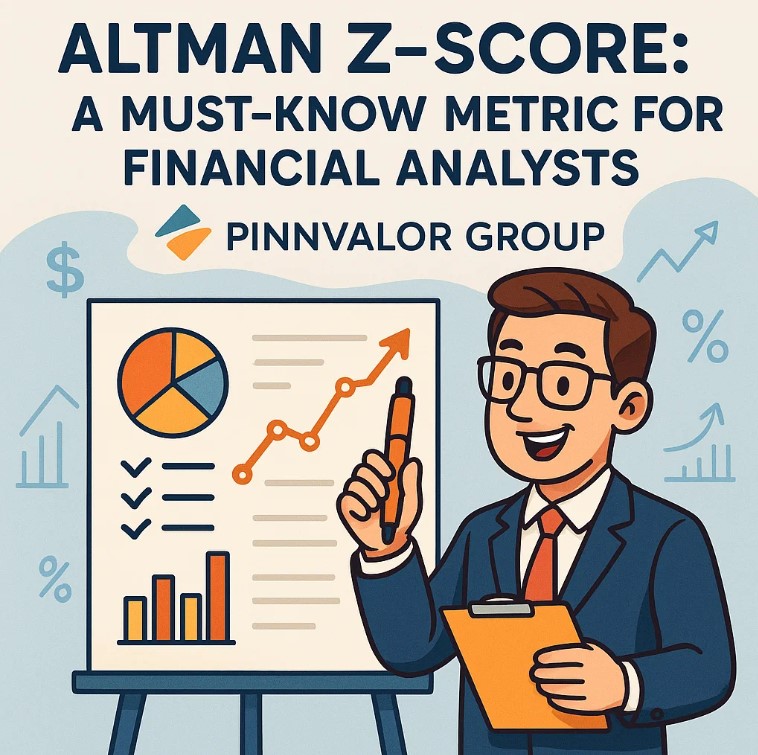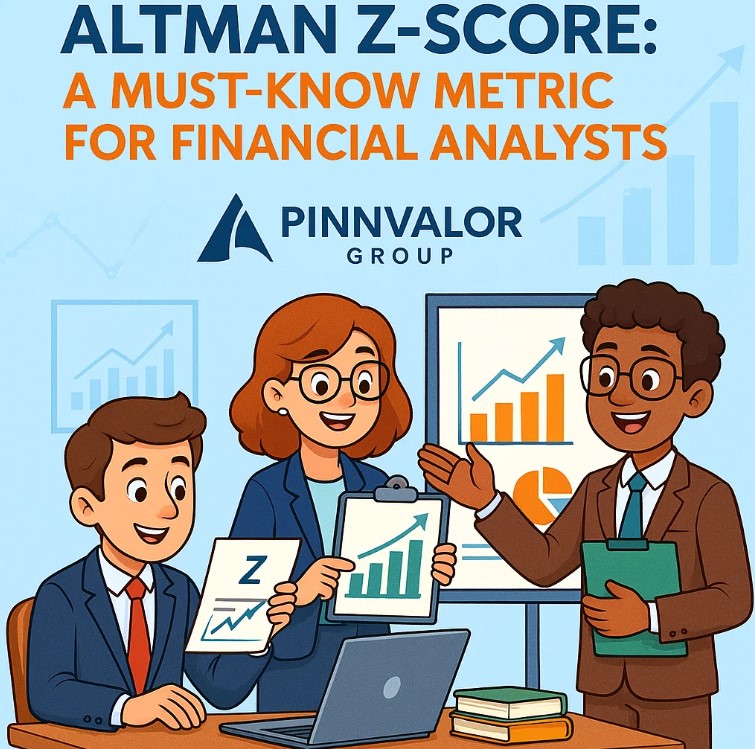
Altman Z-Score: A Must-Know Metric for Financial Analysts
The Altman Z-Score is a powerful predictive model developed by Professor Edward I. Altman in 1968. It is used to assess the likelihood of a company going bankrupt. Over the decades, it has become a trusted financial tool, particularly for analysts, investors, and credit rating agencies.
What if you could forecast corporate collapse before it hits?
In a world of volatile markets, the Altman Z-Score helps you separate stability from collapse. Stay ahead, stay informed.
🔍 What is the Altman Z-Score?
The Altman Z-Score is a composite score based on five financial ratios derived from a company’s income statement and balance sheet. These ratios are weighted and summed to produce a single number that predicts the probability of bankruptcy within two years.
🧮 The Formula:
The original Z-Score formula for publicly traded manufacturing companies is:
Z = 1.2X₁ + 1.4X₂ + 3.3X₃ + 0.6X₄ + 1.0X₅
- X₁: Working Capital / Total Assets
- X₂: Retained Earnings / Total Assets
- X₃: Earnings Before Interest and Taxes (EBIT) / Total Assets
- X₄: Market Value of Equity / Total Liabilities
- X₅: Sales / Total Assets
📊 Interpreting the Score:
- Z > 2.99: Safe Zone – The company is financially stable.
- 1.81 < Z < 2.99: Grey Zone – The company is at some risk of bankruptcy.
- Z < 1.81: Distress Zone – High risk of bankruptcy.
🔧 Why Financial Analysts Rely on It
For financial analysts, the Altman Z-Score serves as an essential red flag tool. Here’s why:
- Early Warning: Detects potential financial distress before it’s visible in earnings.
- Credit Risk Assessment: Helps lenders and investors evaluate borrower risk.
- Valuation Support: Provides context for a company’s future viability.
- Comparative Analysis: Useful across companies and industries (with some adjustments).

📌 Limitations to Keep in Mind
While powerful, the Z-Score isn’t flawless:
- Originally designed for manufacturing firms – requires adjustments for others.
- Based on historical data – may miss current market conditions.
- Does not account for qualitative factors like leadership, strategy, or innovation.
🚀 Modern Applications
Today, Altman’s Z-Score is used by:
- Credit rating agencies
- Investment banks
- Corporate finance teams
- Equity and debt investors
- Academics and researchers
💡 Conclusion
In the complex world of financial analysis, the Altman Z-Score stands out as a simple yet remarkably accurate tool. While it should not be the only metric in your toolkit, it is undeniably one of the most effective for predicting corporate bankruptcy and assessing financial health. Every financial analyst should understand how to calculate, interpret, and apply this score for better decision-making.
Remember: It's not just about predicting failure—it's about empowering proactive financial strategies.
